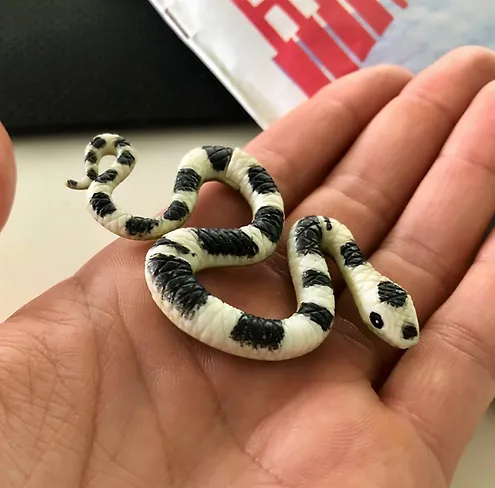I’ve been an environmentalist since childhood, back in the 90’s exploring natural history meant being outdoors and experiencing it first hand or else you headed to the library to explore stories and experiences vicariously through written media; like actual books! Looking back, I feel that natural history information easily digestible by small children was scarce, so posters and flyers and stickers that had anything to do with animals or the environment were incredibly appealing to a 10 year old me.

It was around that time, a chocolate figure in the shape of a monster started to appear at the shops – it was called a Yowie. This chocolate aussie bush monster held a secret – a capsule with a small creature inside – an Australian native animal figurine lovingly accurate in design. Additionally each creature came with its own leaflet including a colour photo of the featured animal and some information about each.
It was from the toy capsule of a chocolate Yowie I discovered for the first time a figure of a little snake with the most striking pattern of black and white alternating stripes. I found it was called the Bandy Bandy Snake, but I quickly nicknamed it: The Michael Jackson Snake. My pop idol, I was sure, wouldn’t mind that the snake was black AND white.
In South East Queensland most people have the vocabulary of a handful of different kinds of snakes; the notoriously dangerous brown snake, the harmless carpet python, the feckless red-bellied black snake. Unless you took a special interest in reptiles, most people haven’t heard of the bandy bandy. But certainly if you saw it, you’d not likely forget, the body of the snake is completely encircled by rings of black and white scales, some having more than 100 rings. What’s more, is the peculiar and memorable behaviour these snakes engage in when they feel threatened. If approached, bandy bandy’s may suddenly jump! And that’s not to be confused with a strike, as it’s not like that at all, the body of the snake may twist and loop and hop in a silent cacophony that confuses the eyes. It’s been described as ‘flicker-fusion’, the idea is this: an animal with a contrasting pattern moves erratically so it blurs, making it difficult for predators to hone in on prey. That’s the basic hypothesis; in actuality, it’s poorly understood. There seem to be cracks in this theory, because once our pugnacious little snake has performed its bizarre acrobatics, it usually lands nearby and remains still once again – it hasn’t moved far and is once again very easy to see. I suspect this behaviour evolved more as a strategy to create avoidance in predators. That is to say, predators are simply surprised by the movement, consider that kind of movement strange for prey and decide it might be best to leave the strange cursed wiggly candy cane well enough alone.
Hows and whys aside, this little snake is certainly striking visually, has the moves like Jagger and a fabulous name to boot, so why is it you’ve never heard of it? It must live somewhere remote and exotic…right? No, it’s actually a relatively common species here, when it’s not jumping about, it’s shy and retiring and lives most of its life (probably) underground. Its ostentatious pattern goes unnoticed underfoot, usually they only emerge at night to forage for, get this, blind snakes! No…they don’t discriminate against the differently abled snake; they hunt a group of worm-like burrowing snakes called blind snakes. That’s all they eat (probably).

On warm wet nights the bandy bandy can be discovered foraging on the surface. And if you live someplace leafy, chances are you’ll encounter them on the roads at night. Or perhaps you won’t notice them, as they are often small – sometimes no longer than a bracelet, and despite their gaudy costume can be difficult to spot on the bitumen, unless you’re taking care to look for them. And we should take care, because locally these wonderful little snakes are killed on the road with devastating frequency. Most warm wet nights this Summer travelling along our mountain road home we spotted them from our car, sadly few were found alive.
As we move into cooler weather, we can expect to see fewer reptiles active. But please spare a thought for the Bandy Bandy because it’ll be back moonwalking across our bitumen roads and please don’t mind that this snake is black and white.
True Blue Reptiles is a Mobile Reptile Zoo, specialising in Children’s Reptile Parties. Our mission is to highlight the incredible diversity and fascinating ecology of Australia’s often misrepresented and misunderstood native reptiles. We know It’s hard to appreciate a species if you don’t know they exist in the first place, and so we hope you enjoyed reading about the cryptic and absolutely glorious Bandy Bandy Snake. Have you considered a Reptile Party for your child’s next Birthday?
